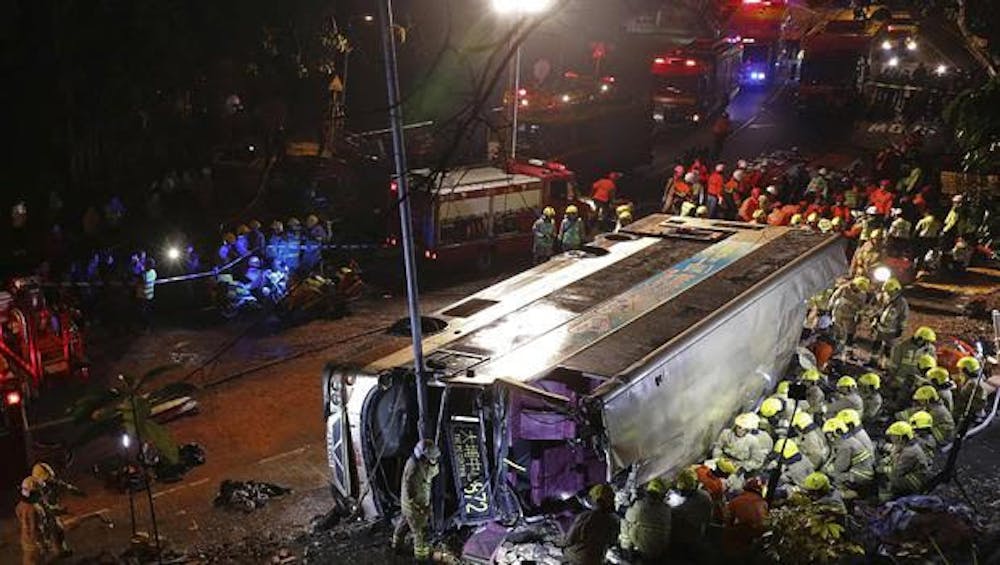By Anandita Mehta
Staff Writer
Hong Kong suffered its deadliest traffic-related incident since 2003 on Feb. 11, when a double-decker bus crashed and overturned in a rural area of the city, killing 19 and injuring 65, according to The New York Times.

Hong Kong’s public transportation system is generally considered to be safe. Chief Executive of Hong Kong Carrie Lam has created an independent panel led by a judge to examine traffic safety, according to The New York Times.
The bus was traveling from it’s stop at the Sha Tin horse-racing track when the bus came to a turn near Tai Po Tsuen and toppled onto its side, according to The South China Morning Post.
The bus was speeding downhill at an estimated 42 mph it approached a turn in the road. The appropriate speed for the turn is 25-30 mph, according to the Morning Post.
Vice-Chairman of the Federation of Bus Industry Trade Unions, Henry Hui Hon-kit, recalled situations where aggravated passengers became distracting for the driver, according to the Morning Post.
“Basically almost every day bus drivers come across this situation of being scolded by passengers while driving,” Hon-kit said. “My highest record was being scolded three times during the same journey.”
The bus was packed with approximately 140 seated and standing passengers, according to CNN.
The driver, 30-year-old Chan Ho-ming, worked part-time as a driver for the Kowloon Bus company, according to Channel News Asia.
Ho-ming was arrested for dangerous driving causing death and may face further charges of manslaughter, according to the Morning Post.
Concerns have arisen over the combination of long working hours and low wages for bus drivers in the wake of the accident. Regulations established in 2010 limit drivers to working days of no more than 14 hours, with a maximum of 11 hours behind the wheel, according to The New York Times.
“It is a question of how we can ensure the bus operation is safe in Hong Kong, which requires not only regulation on the part of the government, but also full support and cooperation of the bus companies,” Lam said, according to The New York Times.







